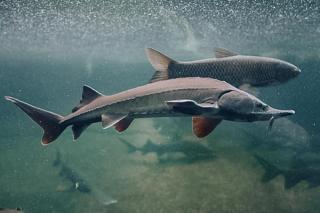

Challenge
SLR staff developed a Lake Sturgeon Best Management Practices Guide for Waterpower with the goal to reduce impacts to Lake Sturgeon.
Solution
A key feature of this guide included flow diagrams showing potential harmful effects to lake sturgeon or its habitat related to key aspects associated with waterpower – project footprint, generation, operational storage and spill. References linking specific mitigation practices to break the causal pathway were identified at key points in the pathway.
SLR also developed a framework to assess effectiveness of waterpower mitigation for Lake Sturgeon. This framework summarized relevant policy and legislation (for example, Endangered Species Act, Species at Risk Act) relating to lake surgeon.
The framework lists the most common techniques to mitigate adverse effects to lake sturgeon: flow regime, water level elevation management and habitat creation. The framework also describes appropriate study design and data needs to assess effectiveness of mitigation.
A rationale for response indicators to characterize the effectiveness of lake sturgeon mitigation – reproductive success, recruitment, abundance, and mortality – was provided. Finally, a table showing response indicators, measurement variables and monitoring timing and duration was developed.
Impact
We used a collaborative workshop-based approach for these two projects. The development and success of both of these assignments depended on cooperative efforts between power producers, and federal and provincial regulators who agreed on objectives discussed during several workshops organized and convened by SLR staff.
